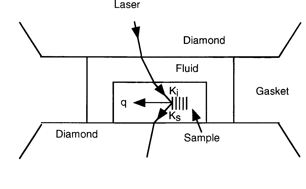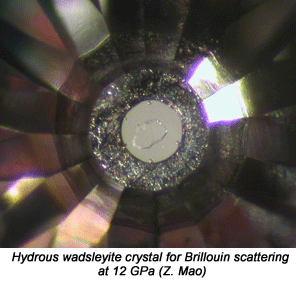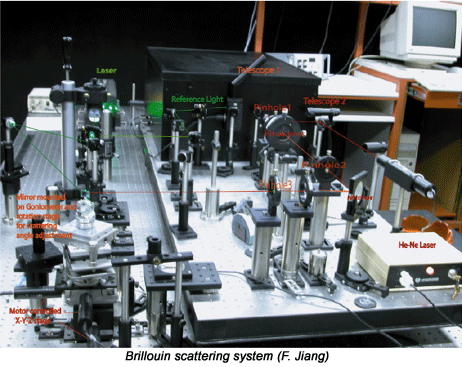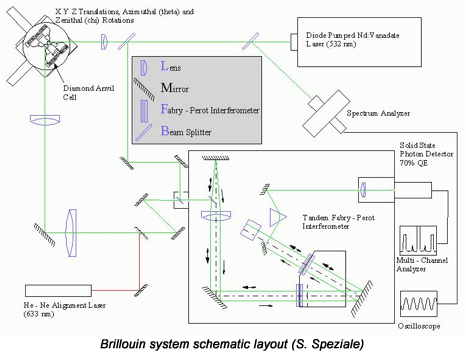Brillouin Spectroscopy
Brillouin scattering results from the inelastic interaction between light and thermal acoustic excitations in dielectric materials. As a result of this process, the scattered radiation is frequency shifted, allowing us to recover the acoustic velocity in a given direction by the measured frequency shift. We use Brillouin techniques to determine the elastic constants of crystals as a function of pressure. From such studies, we obtain information on sound velocities which can be directly compared to seismic velocity profiles for the Earth. Brillouin scattering can also be used to study high-pressure phase transformations and many other phenomena of interest. In recent years, we have used Brillouin scattering to study hydrous silicates, oxides, fluorides, high-pressure phases, and protein crystals.
Brillouin and Raman scattering differ in that the first is due to acoustic vibration modes while the latter is due to optical vibration modes. The frequency shift caused by Brillouin scattering is in the order of 1 cm-1 (= 29.98 GHz), and thus requires a high-contrast Fabry-Perot interferometer for detection.
Brillouin scattering in the diamond anvil cell:





Duffy Group
High-Pressure Mineral Physics and Materials Science Laboratory
Department of Geosciences
Princeton University
